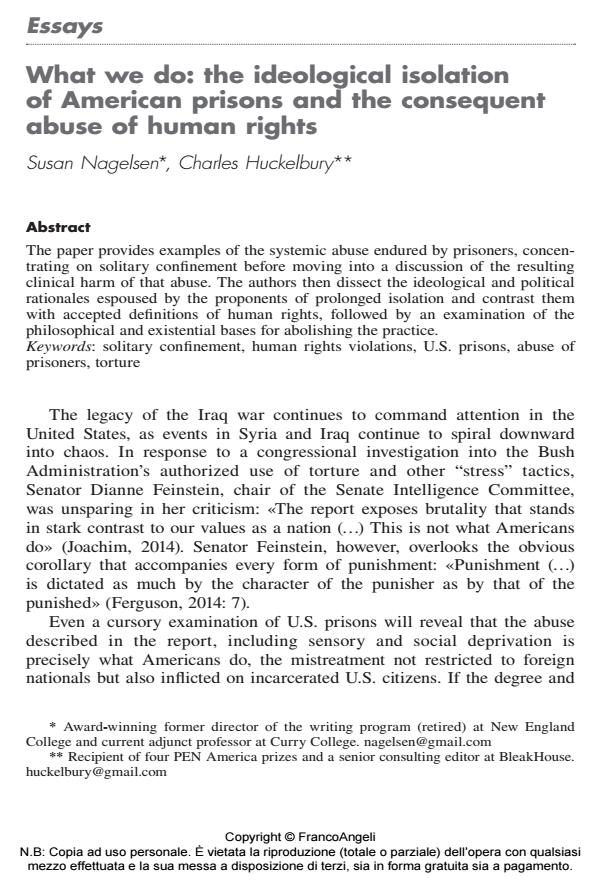What we do: the ideological isolation of American prisons and the consequent abuse of human rights
Journal title SICUREZZA E SCIENZE SOCIALI
Author/s Susan Nagelsen, Charles Huckelbury
Publishing Year 2015 Issue 2015/2
Language English Pages 18 P. 17-34 File size 131 KB
DOI 10.3280/SISS2015-002003
DOI is like a bar code for intellectual property: to have more infomation
click here
Below, you can see the article first page
If you want to buy this article in PDF format, you can do it, following the instructions to buy download credits

FrancoAngeli is member of Publishers International Linking Association, Inc (PILA), a not-for-profit association which run the CrossRef service enabling links to and from online scholarly content.
The paper provides examples of the systemic abuse endured by prisoners, concentrating on solitary confinement before moving into a discussion of the resulting clinical harm of that abuse. The authors then dissect the ideological and political rationales espoused by the proponents of prolonged isolation and contrast them with accepted definitions of human rights, followed by an examination of the philosophical and existential bases for abolishing the practice.
Keywords: Solitary confinement, human rights violations, U.S. prisons, abuse of prisoners, torture
Susan Nagelsen, Charles Huckelbury, What we do: the ideological isolation of American prisons and the consequent abuse of human rights in "SICUREZZA E SCIENZE SOCIALI" 2/2015, pp 17-34, DOI: 10.3280/SISS2015-002003